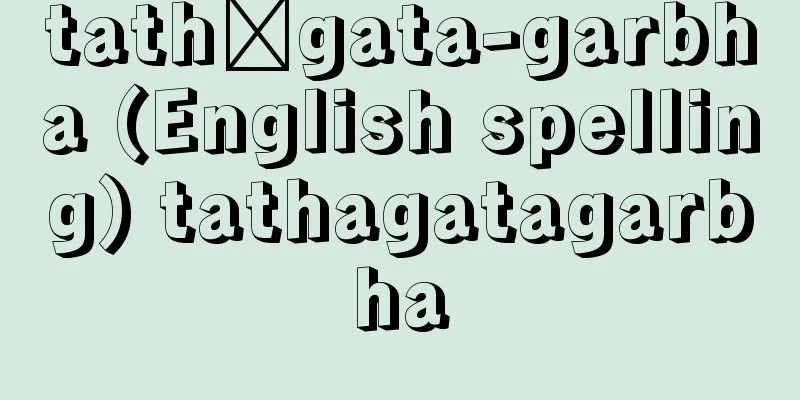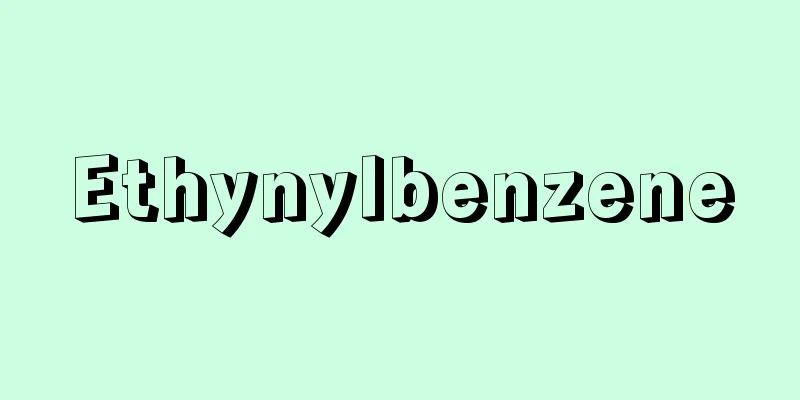School lunch - gakkou kyuushoku

|
A meal plan is a meal plan that is held collectively at school with the aim of encouraging healthy physical and mental development by having students consume nutritionally balanced food. In Japan today, this plan includes instruction on proper dining etiquette and is incorporated into the school curriculum. [Jiro Inoue and Tetsuo Shimomura] History abroadIn the history of modern schools, the beginning of school lunches is said to be in the 1790s in Munich, Germany, when a philanthropist provided soup to children from poor families. This type of initiative then spread to other developed capitalist countries, but in the 20th century, countries such as the Netherlands, the United Kingdom, and the United States made school lunches stipulated by law and, with state subsidies, moved to expand their coverage to all children at the elementary and secondary school levels. Many other countries are also implementing some form of school lunch. Also, in developing countries, there are an increasing number of cases where school lunches are adopted as part of a policy to spread compulsory education. [Jiro Inoue and Tetsuo Shimomura] History in JapanIn Japan, there was a case in 1889 (Meiji 22) in Tsuruoka Town, Yamagata Prefecture (now Tsuruoka City) where Buddhists provided lunches to children as a charitable activity, but it was not until the Great Depression that began in 1929 (Showa 4) that this was taken up as a national administrative policy, when a sharp increase in the number of children who went without food or were in poor health, especially in elementary schools in farming, mountain and fishing villages, was pointed out. The government first established the "Temporary School Lunch Facilities Law" in 1957, and used subsidies from the national treasury to improve children's nutrition and encourage school attendance. In 1965, the government also enacted the "School Lunch Promotion Regulations," which aimed to more actively improve children's physical condition. However, as the situation in World War II became increasingly urgent and food controls became stricter, this was gradually discontinued until defeat came. School lunches were resumed in December 1946 as part of the social reconstruction process following the Second World War, with a major contribution from supplies surplus by the American occupation forces and aid from UNICEF (United Nations International Children's Emergency Fund, now the United Nations Children's Fund). [Jiro Inoue and Tetsuo Shimomura] current situationSchool lunches in Japan have made a dramatic improvement since the School Lunch Law came into force in 1954 (Showa 29), establishing its legal basis. Under this law, school lunches are provided to children and students in elementary schools, junior high schools, and schools for the blind, deaf, and special needs, but the scope of application was later expanded to include night and part-time high schools. In 1999, the number of children and students covered by the law was approximately 7.45 million (99.3%) in elementary schools and approximately 3.48 million (82%) in junior high schools. There are three types of school lunches: full lunches (bread and milk or rice and a side dish), supplementary lunches (milk and a side dish), and milk lunches, which only provide milk, and which one is chosen is left to the circumstances of the region and school. Currently, most elementary schools provide full lunches, but in junior high schools, the implementation rate for full lunches is 66.7% (1999), and the rest provide milk lunches or supplementary lunches. For full school lunches, the national government sets the nutritional standard for each type of school, and the specific menu is to be created by the local board of education or school based on that. In order to streamline the implementation of school lunches, an increasing number of municipalities are setting up shared kitchens. However, a mass food poisoning incident caused by enterohemorrhagic Escherichia coli O157 in 1996 resulted in many patients and deaths through school lunches, and this incident prompted a review of the individual kitchen system at each school. In 1999, the implementation status of cooking methods at public elementary and junior high schools was 45.7% for the individual kitchen system and 54.3% for the shared kitchen system, as a percentage of the number of schools. There are also cases where cooking is outsourced, with 9.2% of schools outsourcing. Each school is also trying to diversify the content and method of meals, for example, using local or sister city dishes for school lunch menus, and introducing a cafeteria-style selection system where students can choose their favorite foods and dishes. Furthermore, the use of eating utensils appropriate to the type of meal is being promoted, and improvements and improvements are being made to school cafeterias and lunchrooms. As a result, the use of aluminum tableware and sporks, which were thought to be the cause of children's so-called "dog-eating" behavior, has decreased dramatically. As of 1999, the number of staff engaged in school lunches was approximately 12,000 school nutrition staff (nutritionists) and approximately 78,000 cooks. [Jiro Inoue and Tetsuo Shimomura] IssuesSchool lunches, which have made a great contribution to improving the dietary habits of children and students over the past half century, are still the subject of constant debate. With a chronic rice overproduction in Japan, the implementation rate of rice lunches has already reached nearly 100% of all school lunches, with the number of meals provided reaching 2.7 times a week (1998). However, reconciling this with the traditional system of school lunches that mainly consisted of bread and milk is also a pending issue, linked to international political and economic trends. With school lunch fees on the rise, it is also important to improve the quality of the meals without putting a strain on household finances, and to increase subsidies for welfare and semi-protection families. Another issue is how to overcome the lack of progress in the spread of school lunches in junior high schools in remote and rural areas. Furthermore, there are harsh criticisms that school lunches prevent a relaxed development of the school curriculum, and that the fact that not only the instruction during lunch but also the collection and accounting of school lunch fees is left to the education department leads to excessive work for teachers. In relation to these, future issues include increasing the number of full-time school lunch staff, establishing dedicated cafeterias, and modernizing cooking facilities. Furthermore, some have raised the argument for abolishing school lunches, arguing that we should reconsider whether school lunches themselves are really necessary in this "age of plenty." However, school lunches have already become widely established in society, and it is not foreseeable that they will be abolished anytime soon. [Jiro Inoue and Tetsuo Shimomura] "School Lunches" by Gunji Atsuyoshi and Kano Toshie (1973, Sanichi Shobo)" ▽ "Fun School Lunches" edited by Hashiguchi Kazuko, Fujii Yoshinobu and Tashiro Hiroshi (1980, Labor Education Center)" ▽ "School Lunch Practical Manual" edited by Nagata Kensuke (1995, Meiji Tosho Publishing) ▽ "School Lunch Handbook" edited by Japan Physical Education and School Health Center (1999, Daiichi Hoki Publishing) [Reference] | | | |Source: Shogakukan Encyclopedia Nipponica About Encyclopedia Nipponica Information | Legend |
|
児童・生徒に栄養的にバランスのとれた食物を摂取させることにより、心身の健全な発達を図ることを目的として、学校で集団的に行われる食事とその指導。現在のわが国では、食事作法の指導などもそれに含めて、学校の教育課程のなかに組み入れて実施している。 [井上治郎・下村哲夫] 外国における歴史近代以降の学校の歴史では、1790年代にドイツのミュンヘンで、篤志家が貧困家庭の子供たちにスープを提供したのが、学校給食の始まりとされている。その後、この種の試みは、ほかの先進資本主義諸国にも広まったが、20世紀に入ると、オランダ、イギリス、アメリカなどでは、学校給食を法令で規定し、国家の助成のもとに、小学校および中等学校段階のすべての子供たちにその対象を拡大する方向をたどってきた。その他の国でも、なんらかの学校給食を実施しているところが多くなってきている。また、開発途上国においても、義務教育普及策の一環として学校給食を採用する例が増えてきている。 [井上治郎・下村哲夫] わが国における歴史わが国でも、1889年(明治22)山形県鶴岡(つるおか)町(現鶴岡市)で、仏教者が慈善事業として児童に昼食を給与した事例がみられるが、それが国家の行政施策に取り上げられたのは、1929年(昭和4)に始まる世界恐慌の結果、とくに農山漁村の小学校で、欠食児童や健康状態の不良な児童の急増が指摘されるに至ってからである。政府はまず32年に「学校給食臨時施設方法」を定め、国庫から補助金を支出して、児童の栄養の改善を図るとともに、就学奨励の実をあげようとした。また40年には「学校給食奨励規定」を制定して、より積極的に児童の体位の向上を意図した。だが、第二次世界大戦の戦局が急を告げ、食糧統制が厳しくなるにしたがって、それも漸次中止のやむなきに至って敗戦を迎えた。 第二次世界大戦後の社会復興の過程で学校給食が再開されたのは1946年(昭和21)12月のことで、それには、アメリカ占領軍の放出物資やユニセフ(UNICEF、国連国際児童緊急救済基金、現国連児童基金)からの援助物資が大きく寄与した。 [井上治郎・下村哲夫] 現状わが国における学校給食が飛躍的な充実を遂げるに至ったのは、1954年(昭和29)に学校給食法が施行され、その法的根拠が確立されてからである。この法律で学校給食の対象となっているのは、小学校、中学校および盲学校、聾(ろう)学校、養護学校の児童・生徒であるが、その後、夜間の定時制高等学校などにも、その適用範囲が拡大された。1999年の対象児童・生徒数は、小学校の場合で約745万人(99.3%)、中学校にあっては約348万人(82%)である。 学校給食の実施形態には、完全給食(パン・ミルクないし米飯と副食)、補食給食(ミルクおよび副食)、ミルクだけを供するミルク給食の3種類があり、そのいずれを選択するかは、地域や学校の実情に任されている。現状では、小学校の場合はほとんどが完全給食を実施しているが、中学校においては、完全給食の実施率は66.7%(1999)で、その他はミルク給食や補食給食となっている。 完全給食については、学校種別の栄養基準量は国が定め、具体的な献立は、それに基づいて各地域の教育委員会や学校が作成するものとされている。学校給食の実施を合理化する見地から、共同調理場を設ける市町村が増加している。しかし、1996年(平成8)の腸管出血性大腸菌O157による集団食中毒事件は、学校給食を通じて多数の患者と死者を出し、この事件をきっかけにして学校単位での単独調理場方式も見直されている。1999年の公立小・中学校における調理方式の実施状況は、学校数の比率でみると、単独調理場方法が45.7%、共同調理場方式が54.3%となっている。なお、調理業務を外部に委託する例もあり、9.2%の学校が外部委託である。各学校でも食事の内容や方法の多様化が図られ、たとえば、郷土や姉妹都市の料理を給食の献立に用いたり、児童・生徒が好みの食品や料理を選ぶカフェテリア方式などによる選択給食の導入などがみられる。さらに食事内容にふさわしい食器具の使用や学校食堂、ランチルームの整備・充実が推進されている。それに伴い、子供のいわゆる「犬食い」の原因とされたアルマイト製食器と先割れスプーンの使用も格段に減少した。なお、学校給食に従事している職員数は、1999年現在で、学校栄養職員(栄養士)約1万2000人、調理員約7万8000人となっている。 [井上治郎・下村哲夫] 問題点過去半世紀にわたって、児童・生徒の食生活の改善と向上に多大の貢献をした学校給食も、そのあり方をめぐって議論が絶えない。国内における米の慢性的な生産過剰が続くなかで、完全給食に占める米飯給食の実施率はすでにほぼ100%に達し、回数も週2.7回(1998)に及んでいるが、これと従来のパン、ミルクを主とする給食のあり方との調整も、国際的な政治、経済の動向とも絡んで懸案になっている。給食費の値上り傾向のなかで、家計を圧迫しないで食事内容の質的充実を図ることや、要保護・準要保護家庭などへの補助金の増額も大きな課題である。また、僻地(へきち)や農村地帯の中学校などにおける学校給食の普及の伸び悩みをどう打開するかも問題である。さらに、学校給食が学校の教育課程のゆとりのある展開を妨げているとか、給食時の指導のみならず、給食費の徴収や経理までもが教育現場の責任にゆだねられていることが、教師の労働過重を招いている、といった厳しい指摘がある。それらとの関連で、給食専任職員の拡充、専用の食堂の設置、調理設備の近代化なども今後の課題である。さらに、この「飽食の時代」に学校給食そのものが本当に必要かどうかを改めて見直すべきではないか、という学校給食廃止論も一部で浮上している。しかしながら、学校給食はすでに社会に広く定着しており、今後の早急な廃止は予想できない。 [井上治郎・下村哲夫] 『郡司篤孝・加納敏恵著『学校給食』(1973・三一書房)』▽『橋口和子・藤井義信・田代宏編『たのしい学校給食』(1980・労働教育センター)』▽『長田健介編『学校給食の実務マニュアル』(1995・明治図書出版)』▽『日本体育・学校健康センター編『学校給食要覧』(1999・第一法規出版)』 [参照項目] | | | |出典 小学館 日本大百科全書(ニッポニカ)日本大百科全書(ニッポニカ)について 情報 | 凡例 |
<<: School Education Law - gakkou kyouikuho
>>: School extension - gakkoukaihou (English)
Recommend
Official Exhibition
This is a government-sponsored public art exhibit...
Nervous - nervous
〘noun〙 (adjective) 1. A disposition to be hypersen...
Diastereoisomerism - diastereo(iso)merism
Among stereoisomers, those that are mirror images ...
Gage - Gage
…In the Aomori region, this is called komise. Not...
Hita [city] - Hita
A city in the western part of Oita Prefecture. It ...
Mr. Chin - Chinshi
During the late Le Dynasty (1529-1788) in Vietnam,...
Capacity to sue - capacity to sue (English spelling)
(1) Under the Civil Procedure Act, the capacity re...
Zagazig
The transportation center of the Nile Delta in nor...
Fouta Djallon Mountains - Fouta Djallon Mountains
A mountainous region that spreads across southwest...
nevus sebaceus (English spelling) nevussebaceus
...There are usually no symptoms, but some people...
Pawtucket
A city in the northwest of Rhode Island, USA. It i...
Better Business Bureau
...Advertisers, media companies, and advertising ...
Stark effect
The phenomenon in which the spectral lines of ato...
Ezokusaichigo - Ezokusaichigo
... F . iinumae Makino grows in clusters in sligh...
Wondjina
… [Jiro Suzuki] [art] The rock art (painted and e...



![Ikeda [city] - Ikeda](/upload/images/67cae6b95a39f.webp)





